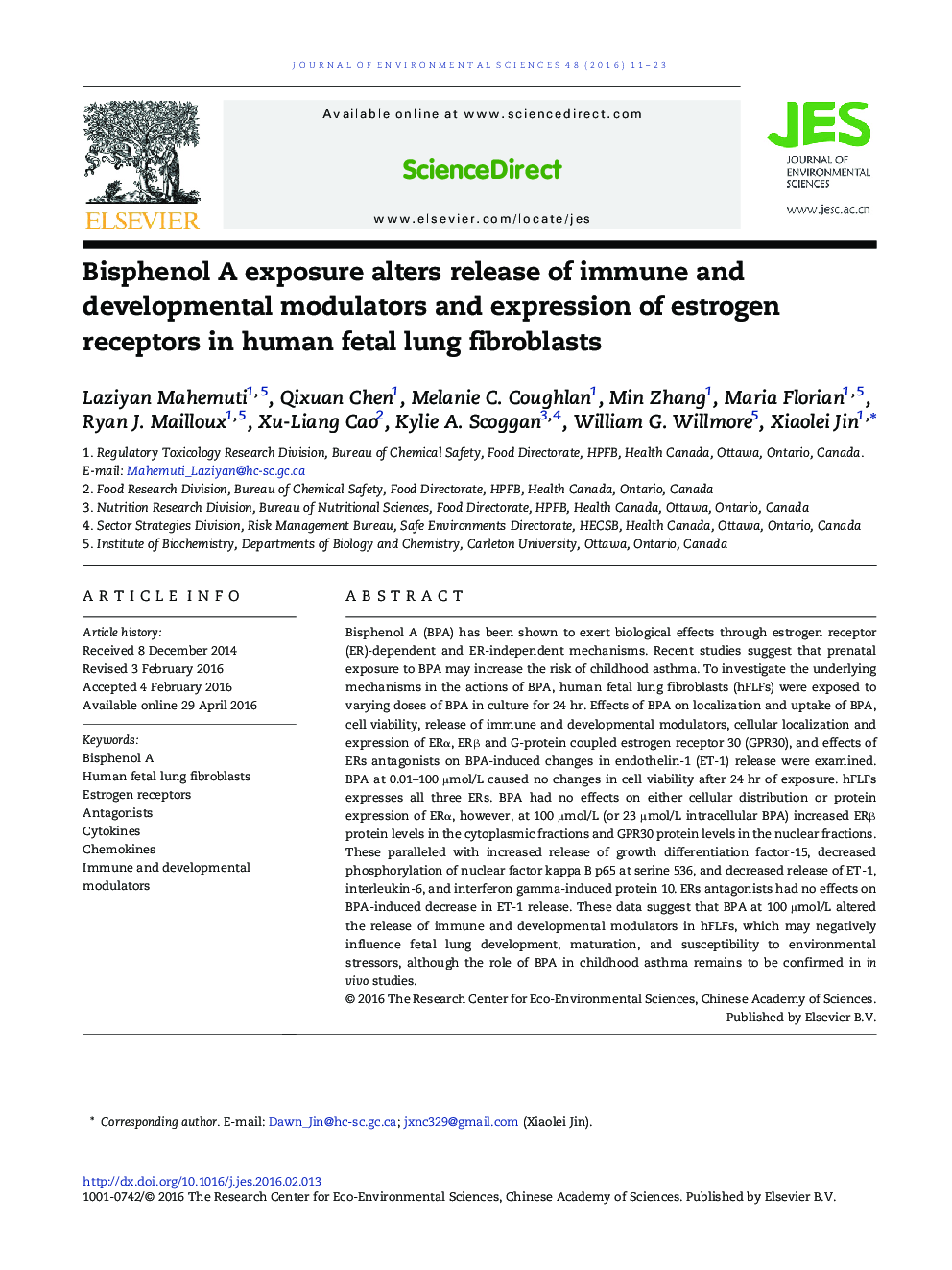| Article ID | Journal | Published Year | Pages | File Type |
|---|---|---|---|---|
| 4453571 | Journal of Environmental Sciences | 2016 | 13 Pages |
Bisphenol A (BPA) has been shown to exert biological effects through estrogen receptor (ER)-dependent and ER-independent mechanisms. Recent studies suggest that prenatal exposure to BPA may increase the risk of childhood asthma. To investigate the underlying mechanisms in the actions of BPA, human fetal lung fibroblasts (hFLFs) were exposed to varying doses of BPA in culture for 24 hr. Effects of BPA on localization and uptake of BPA, cell viability, release of immune and developmental modulators, cellular localization and expression of ERα, ERβ and G-protein coupled estrogen receptor 30 (GPR30), and effects of ERs antagonists on BPA-induced changes in endothelin-1 (ET-1) release were examined. BPA at 0.01–100 μmol/L caused no changes in cell viability after 24 hr of exposure. hFLFs expresses all three ERs. BPA had no effects on either cellular distribution or protein expression of ERα, however, at 100 μmol/L (or 23 μmol/L intracellular BPA) increased ERβ protein levels in the cytoplasmic fractions and GPR30 protein levels in the nuclear fractions. These paralleled with increased release of growth differentiation factor-15, decreased phosphorylation of nuclear factor kappa B p65 at serine 536, and decreased release of ET-1, interleukin-6, and interferon gamma-induced protein 10. ERs antagonists had no effects on BPA-induced decrease in ET-1 release. These data suggest that BPA at 100 μmol/L altered the release of immune and developmental modulators in hFLFs, which may negatively influence fetal lung development, maturation, and susceptibility to environmental stressors, although the role of BPA in childhood asthma remains to be confirmed in in vivo studies.
Graphical abstractFigure optionsDownload full-size imageDownload as PowerPoint slide
